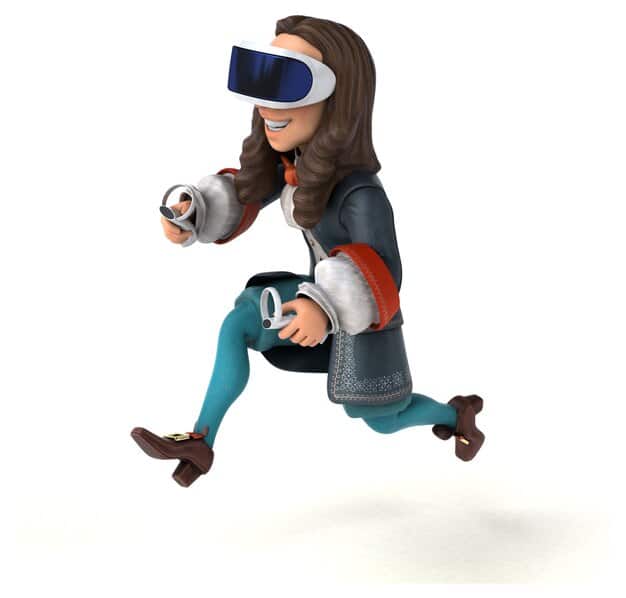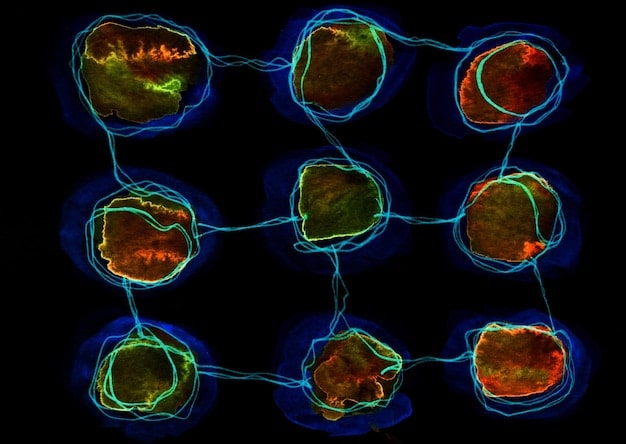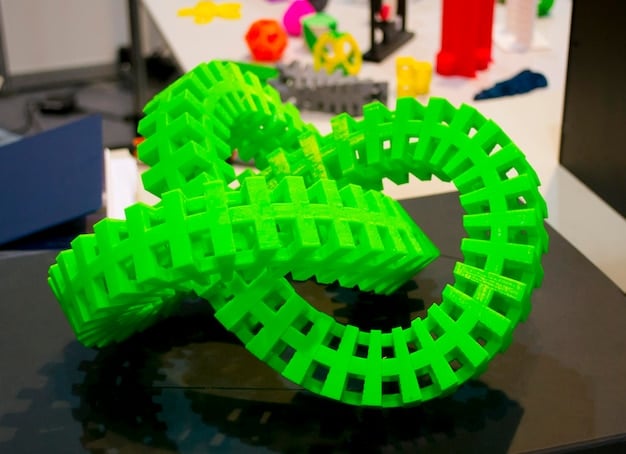Understanding Game Physics: Simulate Realistic Movement and Interactions

Game physics simulates real-world physical behaviors within virtual environments, encompassing principles like gravity, collision detection, and realistic object interactions, essential for creating immersive and believable gaming experiences that resonate with players.
Embarking on the journey of game development often feels like stepping into a universe of boundless creativity. Yet, beneath the vibrant graphics and compelling narratives lies a foundational element that dictates the very “feel” of that world: physics. Mastering Understanding Game Physics: Simulate Realistic Movement and Interactions is not merely a technicality; it is the cornerstone upon which believable, immersive, and truly engaging game experiences are built. Without it, objects would float aimlessly, characters would defy gravity, and every interaction would lack the tangible weight and satisfying feedback players expect.
The foundational principles of game physics
Understanding the intricacies of game physics begins with grasping its core principles, each playing a vital role in animating the digital world. These are not abstract concepts but practical tools that developers wield to bring their creations to life, ensuring that virtual actions mirror real-world consequences, or at least, a believable facsimile. This section delves into the critical components that form the bedrock of game physics, from the simple notion of space and time to the complex dance of forces and velocities.
At its heart, game physics simulates the behavior of objects under various forces and constraints. Unlike real-world physics, which operates on an infinite level of precision, game physics employs approximations and clever shortcuts to achieve convincing results while maintaining performance. This balance between realism and computational efficiency is a constant challenge for developers. It means that while a game might look incredibly realistic, the underlying calculations are often simplified versions of their real-world counterparts, meticulously crafted to prioritize visual believability and smooth gameplay. This distinction is crucial; it’s about creating an illusion of reality that runs in real-time, rather than a perfect scientific simulation.
Forces and motion: gravity, friction, and air resistance
The primary drivers of movement in any physical system, virtual or real, are forces. In game physics, defining and applying forces like gravity, friction, and air resistance are fundamental to how objects move and interact. Gravity pulls everything downward, friction opposes motion between surfaces, and air resistance slows objects moving through the air.
- Gravity: A constant downward force applied to all objects, giving weight and ensuring items fall realistically. This force is often simplified to a constant acceleration, making calculations efficient.
- Friction: Opposes relative motion between two surfaces in contact. Critical for preventing objects from sliding indefinitely and for realistic braking.
- Air resistance (Drag): A force that opposes the motion of an object through a fluid (like air). It’s essential for simulating realistic projectiles or falling objects like parachutes.
These forces, when combined, dictate how an object responds to external stimuli, whether it’s a character jumping, a car skidding, or a bullet flying. The careful tuning of these parameters allows developers to achieve a wide range of movement styles, from cartoonish exaggerated bounces to highly realistic and weighty object interactions. The ability to fine-tune these forces provides a powerful mechanism for shaping the player’s perception of the game world.
Furthermore, these forces are applied iteratively over time. Every frame, the game engine calculates how these forces affect an object’s position and velocity, updating its state accordingly. This iterative process, often called numeric integration, is the backbone of dynamic physics simulation. The accuracy of this simulation depends on the time step between frames; smaller time steps lead to more accurate, but computationally intensive, results.
Collision detection and response
Objects in a game world rarely exist in isolation; they interact, bump, and collide. Collision detection is the process of identifying when two or more objects intersect or touch. Once a collision is detected, collision response dictates how the objects behave as a result of that contact. This is crucial for preventing objects from passing through each other as if they were ghosts.
The sophistication of collision detection varies greatly. Simple games might use basic bounding boxes or spheres, while more complex simulations require highly detailed mesh collisions. The response can range from a simple bounce to complex deformation, depending on the game’s needs and the engine’s capabilities. Accurate collision detection and realistic responses are paramount for gameplay mechanics that involve physical contact, such as combat, racing, or puzzle-solving. Without robust collision systems, game worlds feel intangible and objects pass through each other, breaking immersion.
The complexity of collision detection increases dramatically with the number of objects and the detail of their shapes. Techniques like spatial partitioning (e.g., octrees, k-d trees) are often employed to optimize the search for potential collisions, reducing the number of pairs that need to be checked. This optimization is critical for maintaining performance in games with many interacting objects.
Finally, the properties of materials involved in a collision also play a significant role. Things like elasticity (how much an object bounces) and friction coefficients (how much an object slides after impact) are integral to achieving believable collision responses. A rubber ball will respond differently than a bowling ball upon impact, and game physics systems must account for these material differences to properly simulate realistic interactions.
Popular game physics engines and their capabilities
The complexity of simulating realistic movement and interactions in games is immense, often requiring specialized tools—physics engines—to handle the heavy lifting. Instead of building physics systems from scratch, most game developers leverage established engines that provide robust, optimized, and tested solutions. These physics engines are critical for abstracting away the mathematical complexities, allowing developers to focus on gameplay and design.
These engines are essentially sophisticated libraries of code designed to perform physics calculations efficiently. They manage everything from basic rigid body dynamics to advanced soft body simulations and fluid dynamics, depending on their capabilities. The choice of physics engine is a significant decision for any game project, as it impacts development time, performance, and the ultimate feel of the game’s interactions. Understanding the strengths and weaknesses of popular engines helps in making informed decisions.
Havok physics: a industry standard
Havok Physics has long been considered an industry benchmark, powering thousands of games across various platforms, from consoles to PC and mobile. Developed by Havok, a division of Microsoft, its reputation is built on its high performance, stability, and extensive feature set. Havok is renowned for its robust rigid body dynamics, which is the simulation of solid, non-deformable objects.
Havok’s strength lies in its ability to handle complex scenarios with many interacting objects while maintaining excellent performance. It incorporates advanced algorithms for collision detection, broad-phase and narrow-phase collision handling, and efficient contact solvers. This makes it a go-to choice for games requiring detailed and numerous physical interactions, such as open-world environments with destructible elements or chaotic action sequences.
One of Havok’s key capabilities is its comprehensive suite of tools for content creation and debugging. Developers can visualize collision shapes, force vectors, and other physical properties directly within their development environments, streamlining the iterative process of tuning physics. This level of integration and tooling significantly reduces development time and helps achieve desired physical behaviors more quickly and accurately.
While Havok is a commercial engine, its widespread adoption attests to its reliability and proven track record in delivering physically plausible game worlds. Its continued evolution has also seen it integrate features like destruction physics and cloth simulation, further expanding its versatility for modern game development challenges, where dynamic environments are increasingly expected by players.
Nvidia physX: graphics card acceleration
Nvidia PhysX stands out primarily due to its ability to leverage GPU acceleration, enabling more complex and detailed physics simulations than typically possible on a CPU alone. Originally developed by Ageia and later acquired by Nvidia, PhysX is deeply integrated into many popular game engines like Unreal Engine and Unity, making it highly accessible to developers.
The core advantage of PhysX is its parallelism; by offloading physics calculations to the GPU, it can process many computations simultaneously, leading to significantly enhanced visual fidelity and interaction complexity. This translates into richer environmental destruction, more realistic particle effects, fluid simulations, and complex character interactions that would otherwise be computationally prohibitive. For instance, games can feature crumbling buildings, dynamic smoke and fire, and cloth simulation that folds and wrinkles in real-time, all powered by PhysX.
PhysX offers a comprehensive set of physics modules, including rigid body dynamics, soft body dynamics (for deformable objects like cloth or jelly), fluid simulation, and particle systems. Its widespread adoption is partly due to Nvidia’s dominant position in the graphics card market, as PhysX performance is optimized for Nvidia GPUs. However, it also offers CPU fallbacks, ensuring compatibility across a broader range of hardware configurations.
Nvidia continues to invest in PhysX, pushing the boundaries of what’s possible in real-time physics simulation. Its focus on highly visual and interactive physics effects makes it a compelling choice for games aiming for a high degree of immersion through dynamic environments and believable object behaviors, transforming static environments into dynamic playgrounds.
open-source alternatives: bullet physics and ode
While commercial engines like Havok and PhysX dominate much of the AAA game development landscape, open-source physics engines offer compelling alternatives, particularly for indie developers, students, or projects with specific customization needs. Bullet Physics Library and Open Dynamics Engine (ODE) are two prominent examples that provide robust physics simulation capabilities without licensing costs.
Bullet Physics, developed by Erwin Coumans, is a professional open-source physics engine used in a variety of contexts, from games and visual effects to robotics and film rendering. Its strengths include rigid body dynamics, soft body dynamics, and raycasting. Bullet is highly optimized and known for its performance and accuracy, particularly in collision detection and resolution. It supports a wide range of platforms and is extensively documented, making it accessible to developers who want to dive deep into physics implementation. Its flexibility means that it can be integrated into custom game engines or used alongside existing frameworks.
ODE, or Open Dynamics Engine, is another popular open-source physics engine focused on simulating rigid body dynamics. It’s particularly well-suited for simulating vehicles, characters, and other objects with complex mechanical constraints. ODE provides a comprehensive set of functions for collision detection and for simulating forces, torques, and joint constraints. While it might not have the same level of advanced features as Bullet (like soft body dynamics), its focus on rigid body simulation makes it highly efficient and suitable for many game types, especially those prioritizing realistic mechanical interactions.
The primary advantage of open-source engines is the freedom they offer. Developers can inspect, modify, and extend the codebase to suit their exact project requirements, providing unparalleled control over the physics simulation. This can be invaluable for highly specialized projects or for academic research, where transparency and customizability are paramount. While they might require more direct implementation effort than integration with pre-packaged commercial engines, the community support and educational value they provide are significant benefits for many developers.

Implementing game physics: core mechanics and considerations
Bringing game physics into a playable experience involves more than just selecting an engine; it requires a deep understanding of how to implement core mechanics and consider various factors that impact performance and realism. This section explores the practical aspects of integrating physics into a game, from deciding between different physics models to optimizing the simulation for smooth gameplay and ensuring stability.
The journey from a theoretical physics concept to a tangible in-game behavior is iterative and often challenging. Developers must constantly balance the desire for absolute realism with the practical limitations of computing power and the need for a fun, engaging player experience. This means making conscious choices about the level of detail, the type of interactions, and the overall fidelity of the simulation. It’s about crafting an illusion that serves the gameplay, not necessarily mirroring reality perfectly.
Rigid body vs. soft body physics
A fundamental decision in game physics implementation revolves around the type of objects being simulated: rigid bodies or soft bodies. Each has distinct characteristics and computational demands.
Rigid body physics deals with objects that are considered perfectly stiff and undeformable. Think of a car, a bullet, or a wooden crate. Their shape and size do not change when forces are applied or when they collide. This type of simulation is computationally less intensive and is the most common form of physics in games. It’s excellent for anything from character movement and projectile trajectories to simulating objects in an environment that don’t need to deform. The simplicity of rigid body calculations allows for a higher number of interactive objects and faster simulation speeds, which directly benefits gameplay performance. Most game engines excel at rigid body dynamics.
Soft body physics, on the other hand, simulates objects that can deform, bend, or stretch, like cloth, ropes, jelly, or deformable tires. This is significantly more complex to simulate because the object’s shape changes dynamically, requiring more detailed calculations for internal forces and interactions. While soft body physics can greatly enhance visual realism and immersion (e.g., character clothing swaying with movement, destructible environments that break into shrapnel), it comes with a much higher computational cost. Developers must carefully consider whether the visual fidelity gained is worth the performance overhead, often using soft bodies sparingly or for specific visual effects rather than core gameplay mechanics. Recent advancements in GPUs and more optimized algorithms are making soft body physics more accessible for real-time applications.
Optimizing physics performance
Physics simulations, especially complex ones, can be incredibly demanding on a game’s CPU and sometimes GPU. Optimizing physics performance is crucial for maintaining desirable frame rates and ensuring a smooth player experience. Without careful optimization, physics calculations can quickly bottleneck the game, leading to stuttering or slow-motion effects.
One key optimization technique is culling and level of detail (LOD) for physical objects. Not every object needs to be simulated at full fidelity at all times. Objects far from the camera or not actively interacting with the player can have their physics simulation simplified or even paused entirely. For example, a distant rock might not need detailed collision detection until the player gets closer.
Another approach is to use simplified collision shapes. While detailed mesh collisions offer the most accuracy, they are computationally expensive. Often, simple primitives like spheres, capsules, or bounding boxes can approximate an object’s physical form sufficiently for collision detection, significantly reducing overhead. Compound shapes (multiple simple primitives combined) can also offer a good balance between accuracy and performance.
Physics sleeping is an effective optimization where objects that are at rest (not moving or being affected by forces) are temporarily removed from active simulation. Once a force is applied or a collision occurs, they “wake up” and become active again. This drastically reduces the number of calculations needed for static parts of the environment.
Finally, fixed time steps for physics updates can improve stability and predictability, even if the rendering frame rate fluctuates. This decouples the physics simulation from the rendering loop, ensuring physics calculations are always consistent, preventing bizarre behaviors that can arise from variable time steps. Parallel processing, where physics calculations are distributed across multiple CPU cores, also plays a crucial role in modern game engine optimization, leveraging multi-core processors.
Handling common physics challenges
Game physics, despite its advancements, presents several common challenges that developers frequently encounter. Understanding these issues and knowing how to mitigate them is key to delivering a stable and believable game world.
One pervasive challenge is jitter and instability. This occurs when objects unexpectedly vibrate or shake, often due to numerical precision errors or multiple objects trying to occupy the same space. This can be alleviated by careful tuning of physics parameters like iteration counts, damping, and restitution, and by ensuring stable integration schemes. Small, fast-moving objects are particularly prone to these issues.
Penetration is another common problem, where objects pass through each other instead of colliding cleanly. This can happen if an object moves too fast between physics frames, “tunneling” through another object. Techniques like speculative contacts, continuous collision detection (CCD), or increasing the physics update rate can help prevent this, though CCD is computationally intensive.
Simulating realistic ragdoll physics for characters after they are defeated or hit can be challenging. Achieving a convincing, unscripted collapse that reacts naturally to the environment requires careful setup of joints, constraints, and mass distribution for the character’s skeletal system. Often, a blend of animation and ragdoll physics is used: “animating into” ragdoll and “blending out” to a static pose.
Finally, managing physical constraints (like hinges, joints, or springs) accurately can be difficult. Incorrectly configured constraints can lead to unexpected forces or instability, causing objects to explode or behave erratically. Robust constraint solvers and iterative refinement are essential for these complex interactions. Each of these challenges requires a systematic debugging approach and often a deep understanding of the underlying physics engine’s mechanics.

Advanced topics in game physics: pushing boundaries
Beyond the fundamental principles and common implementations, game physics continues to evolve, pushing the boundaries of realism and immersion. Advanced topics delve into more complex simulations, offering developers the tools to create increasingly dynamic and believable environments. These areas often require specialized algorithms and significant computational resources but yield impressive results that enhance the player experience.
As hardware becomes more powerful, the distinction between simple approximations and intricate simulations blurs, allowing for effects previously confined to pre-rendered cinematics to run in real-time. This pursuit of deeper physical realism adds layers of complexity, but also opens up new avenues for gameplay mechanics and environmental storytelling.
Destruction physics and procedural generation
The ability to create dynamically destructible environments adds an incredible layer of interactivity and realism to games. Destruction physics involves simulating objects breaking apart into smaller pieces, driven by forces like impacts or explosions. This is distinct from simply swapping models; it involves dynamically creating new rigid bodies from a broken parent object and simulating their subsequent motion.
Techniques often rely on pre-fracturing models into smaller chunks or using run-time voxel-based destruction. For example, when a wall is hit by a large projectile, it might not just disappear; instead, it could crumble into debris, with each piece reacting physically. This requires sophisticated algorithms to manage the creation of new collision shapes and the transfer of kinetic energy to the fragmented pieces.
Closely related is procedural generation in combination with physics. Imagine an entire building that generates its internal structure based on physics calculations, or a natural disaster that dynamically reshapes the terrain. This combination allows for unique, non-scripted destructive events every playthrough, enhancing replayability and player agency. While computationally demanding, the visual impact of realistic destruction can be immense, transforming static environments into dynamic, ever-changing landscapes that respond directly to player actions.
Fluid dynamics and cloth simulation
Simulating realistic fluids (like water, smoke, or fire) and deformable materials (like cloth) in real-time presents significant challenges, but advancements are making these effects more common. Fluid dynamics in games often involves a simplified approach to computational fluid dynamics (CFD). Instead of solving complex Navier-Stokes equations, games typically use particle-based systems (e.g., SPH – Smoothed Particle Hydrodynamics) or grid-based methods to simulate fluid behavior.
For water, this could mean simulating ripples, waves, and splash effects that accurately react to objects moving through them. For smoke and fire, it involves dynamic dissipation, flow, and interaction with the environment. While perfect real-time fluid simulation is still a frontier, these approximations can create highly convincing visual effects that enhance immersion, whether it’s a character swimming in a river or a fire propagating through a building.
Cloth simulation brings another level of realism to character models and environments. Instead of stiff, pre-animated clothing, cloth simulation makes fabric dynamically react to character movement, wind, and collisions with other objects. This involves treating the cloth as a mesh of interconnected particles and springs, calculating forces and constraints to mimic true fabric behavior.
The challenge lies in balancing visual fidelity with performance. High-resolution cloth simulations can be extremely costly. Developers often use various optimization techniques, such as lower-detail cloth models for distant characters, or fixed “pinning” points to reduce the number of simulated vertices. Realistic cloth simulation adds considerable polish and believability to character animations, making movements feel more natural and alive.
Haptic feedback and VR integration
As virtual reality (VR) and haptic technologies advance, game physics simulation plays an even more crucial role in delivering truly immersive experiences. Haptic feedback uses physical sensations (like vibrations or forces) to convey information or simulate interactions. When combined with accurate game physics, haptic feedback can dramatically increase the sense of presence and tangibility in a virtual world.
Imagine feeling the recoil of a virtual weapon, the impact of a collision, or the resistance of an object as you push it. Game physics provides the data—the forces, impacts, and material properties—that haptic devices then translate into physical sensations. This creates a powerful feedback loop: you see an object collide, the physics engine calculates the collision, and your haptic device makes you feel the impact. This enhances the sense of realism and directly contributes to a more engaging and believable interaction.
In VR particularly, where the goal is to create a strong sense of immersion and presence, accurate physics is paramount. If a virtual object doesn’t react physically as expected, or if a virtual hand passes straight through a table, it breaks the illusion. VR physics often requires even greater precision in collision detection and response because players are directly interacting with the environment through motion controllers, and any mismatch between visual and physical feedback is immediately noticeable. The integration of physics with VR headsets and specialized haptic gloves or suits represents the cutting edge of immersive physical interaction, transforming gameplay from visual consumption to tangible experience.
| Key Point | Brief Description |
|---|---|
| ✨ Simulation Basics | Simulates real-world physical behavior including gravity, friction, and collision detection for believable interactions. |
| ⚙️ Engine Choices | Popular engines like Havok and PhysX provide robust frameworks, while open-source options offer flexibility. |
| 📈 Performance Optimization | Crucial for smooth gameplay, involving techniques like simplified collision shapes, physics sleeping, and culling. |
| 🚀 Advanced Applications | Includes destruction physics, fluid dynamics, and VR/haptic integration for enhanced immersion. |
Frequently asked questions about game physics
▼
Game physics is a simplified, optimized approximation of real-world physics, prioritizing visual believability and real-time performance over absolute scientific accuracy. It uses algorithms that create the illusion of reality without the heavy computational demands of full scientific simulations, ensuring smooth gameplay rather than perfect scientific fidelity.
▼
Physics engines are essential because they abstract complex mathematical calculations related to forces, collisions, and object interactions. This allows developers to implement realistic behaviors without building physics systems from scratch, significantly speeding up development, reducing errors, and ensuring consistency across diverse gaming platforms, ultimately enhancing game quality and player immersion.
▼
Collision detection identifies when two objects in a game world intersect or touch. It typically involves first a “broad phase” to quickly identify potential collisions (e.g., using bounding boxes), followed by a “narrow phase” that performs precise checks using more detailed shapes. Once detected, a “collision response” determines how the objects react, like bouncing or stopping, preventing them from passing through each other.
▼
Rigid body physics simulates solid, undeformable objects (like rocks or cars), being computationally efficient. Soft body physics, conversely, simulates deformable objects (like cloth or jelly) that can bend and stretch, providing higher visual realism but requiring much more computational power. Most games utilize rigid body physics for core interactions, with soft body physics used sparingly for specific visual enhancements.
▼
Yes, game physics can be used for realistic destruction through “destruction physics” techniques. This involves breaking objects into smaller, dynamically simulated pieces upon impact or explosion. These techniques often utilize pre-fractured models and advanced algorithms to manage the fragmented objects and their subsequent physical reactions, enabling highly interactive and dynamic destructible environments that enhance player engagement.
Conclusion
The journey through the nuanced world of game physics reveals it to be far more than a mere technical component; it is the very soul that breathes life into virtual experiences. From the foundational principles of gravity and collision to the cutting-edge realms of fluid dynamics and VR haptics, game physics underpins every believable jump, every satisfying crash, and every immersive interaction. Developers constantly navigate the delicate balance between scientific accuracy and computational efficiency, leveraging powerful engines and ingenious optimization techniques to sculpt digital worlds that feel tangible and responsive. Ultimately, a deep understanding of game physics isn’t just about making things move; it’s about crafting experiences that resonate with players, creating an authentic connection between the virtual and the visceral, ensuring that the magic of gaming feels profoundly real.





